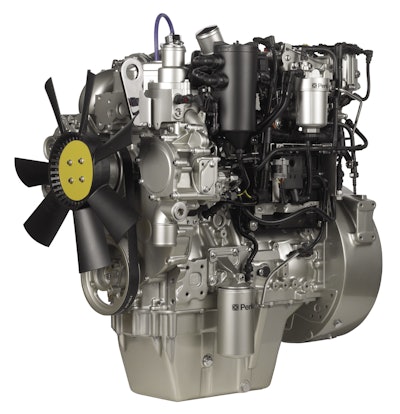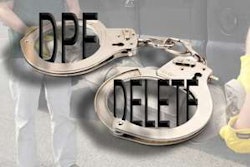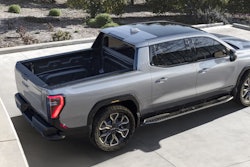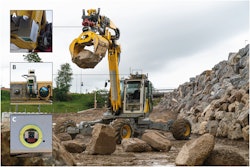
Maintenance is necessary on any diesel engine, but the less, the better for the owner. To that end, Perkins has developed a range of four cylinder power plants that do not need a diesel particulate filter (DPF) to meet Tier 4 Final emissions regulations that go into effect in 2014.
With their four-cylinder design and 4.4 liters of displacement the Perkins 1204F series of engines offers two versions, single or twin turbo. The single turbo models (1204F-E44TA) put out 147 horsepower, while the twin turbo design (1204F-E44TTA) ups that to 175 horsepower. The single turbos deliver improved fuel economy, power and torque. The twin turbochargers are mounted in series for extra power density, low speed torque and faster transient response.
The component that eliminates the need for a DPF in both 1204F models is a diesel oxidation catalyst/selective catalytic reduction (DOC/SCR) module. This module is smaller than a DPF- based system would be, reducing the size of the engine and maintaining a compact profile. It also eliminates the need for in-use regeneration, since the particulate emissions are prevented in the combustion process.
The DOC in the module strips out hydrocarbons and particulates. It connects to an injector and mixing tube where the SCR goes to work spraying the exhaust gases with a urea-based diesel exhaust fluid (DEF) which reduces the NOx levels by more than 90 percent before it exits the exhaust pipe.
Compact in size, the DOC/SCR system is ideally suited for smaller machines such as backhoes, telehandlers, forklifts and mid-sized excavators, says Daniel Clayton, Perkins Tier 4 product marketing manager. For customers who might be weighing the difference between the twin turbo 1204F-E44TTA and a six-cylinder engine, Perkins also offers a service-free DOC/DPF/SCR aftertreatment option. This setup allows the engine to come closer to the transient performance of a six-cylinder engine while still yielding some space savings.
If you reduce NOx in cylinder, you sacrifice some fuel efficiency. But to reduce NOx with the SCR, you use diesel exhaust fluid (which costs roughly about the same as diesel fuel). Perkins “optimizes” its SCR delivery systems to give you the best balance of emissions reductions and DEF usage, Clayton says.
In keeping with the maintenance-free goals of the DOC/SCR system, the DPF module mentioned above is also maintenance free up to the normal core engine overhaul point.
The chart below shows where the various emissions control strategies appear in the Perkins Tier 4 Final lineup, with a DOC/DPF predominating in the sub-74 horsepower categories, and the various combinations of SCR technology taking over from 75 horsepower and up.
Tier 4 Interim
The less stringent Tier 4 Interim emissions regulations came into effect for many categories of engines the beginning of this year. Perkins strategies for these don’t include SCR components, but rather meet the regs with a combination of DOC/DPFs and NOx reduction systems.
The NOx reduction system is an external exhaust gas recirculation system. Paired with the DPF, the NOx reduction system meets Tier Interim regs while delivering high transient performance and fuel consumption reductions, says Clayton.
The DPF on the 1206E-E66TA and 1204E models uses passive regeneration which is transparent to the operator and is service free for the life of the engine, says Clayton.
What’s the deal with DPF’s?
Diesel particulate filters are used in a variety of Tier 4 Interim and Tier 4 Final engines to reduce hydrocarbons and soot in the exhaust. However some DPFs eventually have to be removed and cleaned or replaced once un-burnable ash collects inside and reduces backpressure.
This is particularly true in larger horsepower engines. The EPA requires engine makers to design DPFs that last at least 4,500 hours (above 174 horsepower) and 3,000 hours (below 174 horsepower). So it has become a goal for some engine manufacturers to design engines with service-free DPFs, thus eliminating this maintenance interval.













